The Fastfire and the Deltapoint Pro are almost the same thing, right? Wrong.
Though they share the same red dot sight design, they couldn’t be more different from cost and dot size to illumination settings and battery life.
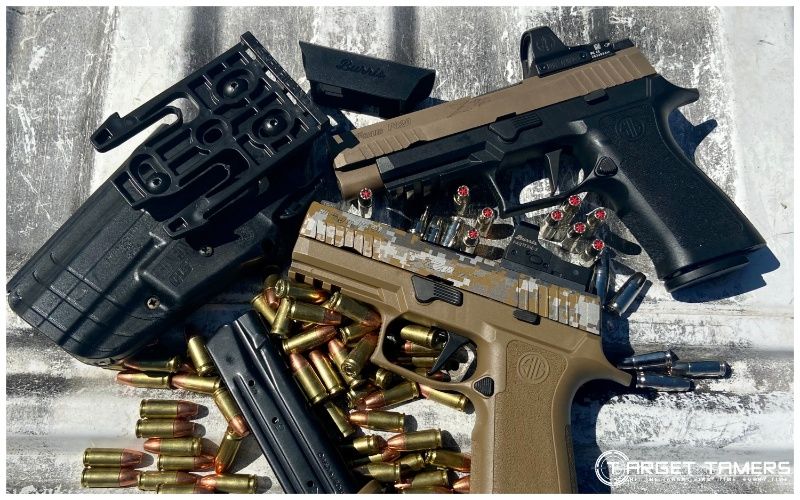
To help you understand what you’re getting (or going without!), I compare the burris fast fire iii VS Leupold Deltapoint Pro in depth. These comparisons are based on my actual hands-on field work with both.
I’ll take you through discussions of cost, optical quality, illumination systems, battery life, build quality, and more.
After all is said and done, you’ll know just how different they are to make a better decision on which is best for you.
Quick Comparison Overview & Table
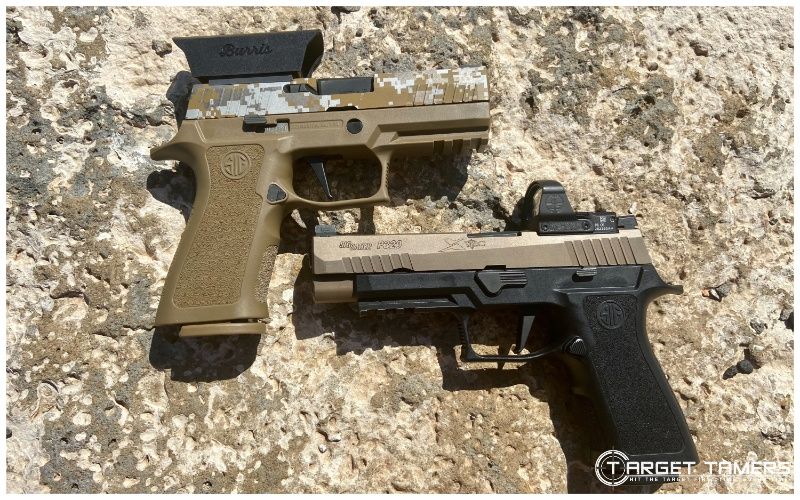
The Burris Fastfire 3 is a compact pistol red dots sight with an 8 MOA dot for close-range encounters. It’s perfect for a pistol but can be mounted to a rifle out of the box. The Leupold DeltaPoint Pro is a long-time winner for those in competition and law enforcement.
Both these optics are designed to be pistol red dots, but they can also be equipped to rifles. The Deltapoint Pro with the 2.5 MOA red-dot would be the better fit for it.
Though they’re both micro-sized reflex red-dot sights, the illumination system operates differently, they each have different special features, and they’re powered by different battery types too. After comparing both, you’ll know which one is best for your needs.
By the way, each red dots sight is reviewed in full. You can read my hands-on reviews here:
| Features | Burris FastFire 3 | Leupold DeltaPoint Pro |
|---|---|---|
| Price Range | Under $250 | Under $500 |
| Type | Reflex red dot sight | Reflex red dot sight |
| Reticle | 8 MOA dot | 2.5 MOA dot |
| Adjustment Value | 1 MOA | 1 MOA |
| Illumination Settings | Auto Brightness & 3 DL (manual) | 8 DL (manual) |
| Illumination Control Location | Left side (button) | Top (button) |
| Battery Life | 5000 hours | 300-1600 hours |
| Battery Type | CR1632 | CR2032 |
| Battery Compartment | Top loading | Top loading |
| Dimensions | 1.8 x 1.25 x 1” | 1.8 x 1.3 x 1.05” |
| Weight | 1.5 oz | 2 oz |
| Waterproof | Yes | Yes |
| Mount Type/Footprint | Docter/Noblex | Leupold DPP (Shield RMS) |
| Special Features | Auto Brightness, Auto Off, See-through sunshade included | Motion Sensor Technology |
Why Trust Me?
After hundreds of hours of hand-testing red dot sight in the field and on the hunt, and thousands more hours researching, writing, photographing and creating videos about them, I feel I have earned the title of expert when it comes to optics!
Optics are not just my passion, but also my full-time job!
I get my hands on as many of the optics I test as possible (through buying, borrowing or begging!) and run them through their paces to make sure they will perform out in field.
Check out our optics testing process here.
Over a decade of experience training, varmint hunting and CQB has been integral in putting together this Burris Fastfire 3 and Leupold DeltaPoint Pro comparison.
Feature Comparisons of the Burris Fastfire III VS Leupold DeltaPoint Pro
Cost
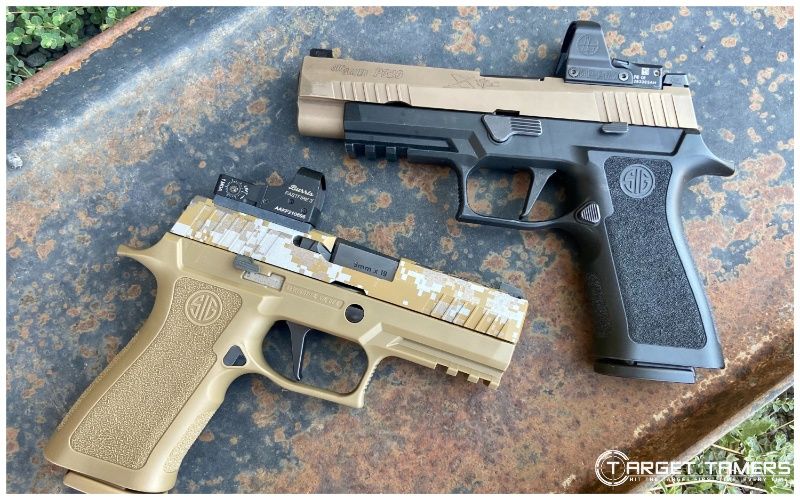
In general, pistol red dot sights can be more expensive than the enclosed micro red dot sights that you’d see on a rifle. Quality name-brand red dots marketed for pistols are somewhere in the $150-$500 price range. The Leupold Deltapoint Pro is more than twice the cost of the Burris Fastfire 3.
Why is the Leupold so much more expensive than the Burris? I can’t exactly say why since I feel like I get similar performance and they’re both well made. But the Deltapoint Pro is made in the USA with slightly better glass versus the FastFire having been made in the Philippines.
When it comes to cost alone, the Burris FastFire 3 is undoubtedly more affordable.
Winner: Burris Fastfire 3
Optical Quality
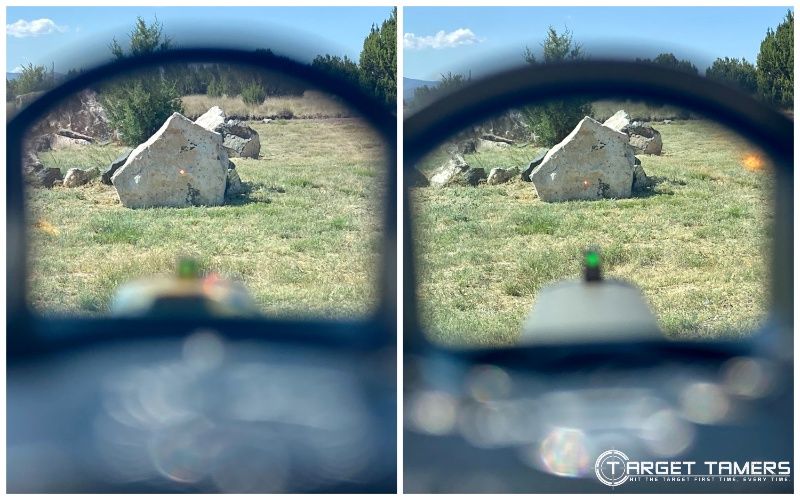
I really like the optical quality through the Burris Fastfire 3 and the Leupold DeltaPoint Pro red dot sights. The glass is clear, sharp, and I would say the quality of coatings are similar. The dichroic coating (that bluish tint) is noticeable but not distracting.
It’s more noticeable against light and white backgrounds, but I would say they have pretty good color fidelity in most conditions.
For astigmatism, you might need to keep your glasses or contact lenses on. I’m far-sighted, and although I had a little bit of dot flaring with the Burris Fastfire 3, I didn’t need to wear my glasses.
The larger window on the Leupold offers a panoramic and seemingly flatter and natural sight picture that makes it very easy and comfortable on the eyes. I do see a little bit of LED reflections on the glass in awkward positions, but most of the time, I don’t see it.
The Burris Fastfire 3 has a smaller window and with the way the lens is placed, it doesn’t seem as natural to look through as the Leupold in a side-by-side comparison. Though the Burris has great optical quality, I do think the Leupold is better.
Winner: Leupold DeltaPoint Pro
Reticle (Dot Size)
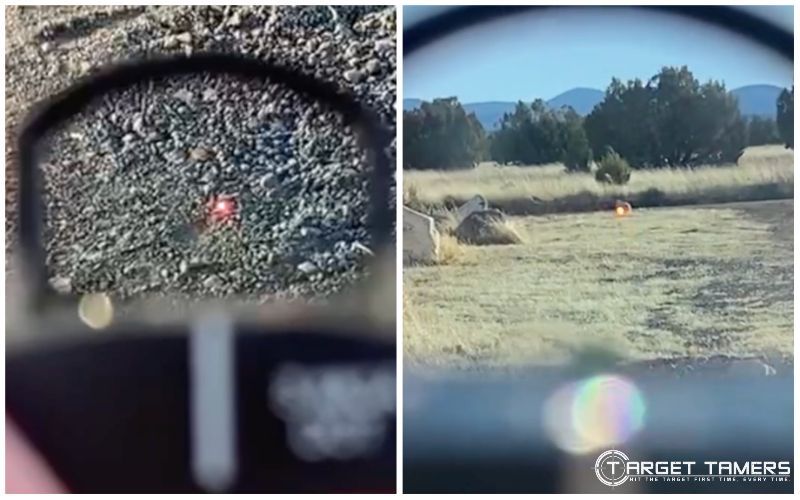
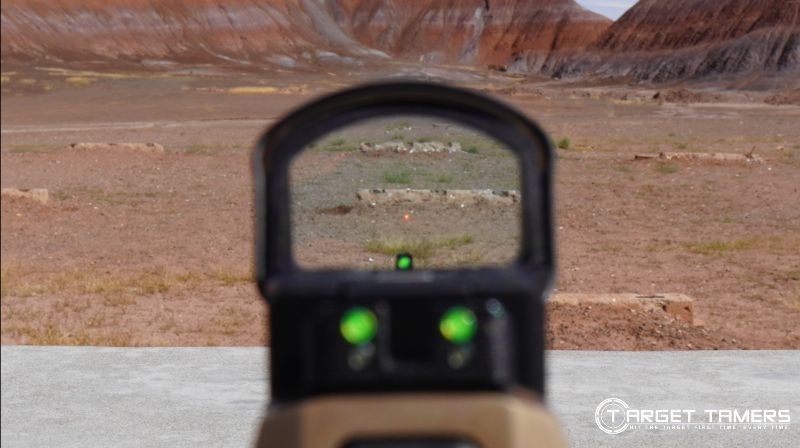
Pistol red dot sights are kept very simple when it comes to the aiming system. A large dot is superimposed onto the target and that is your simple sight picture. The Leupold DeltaPoint Pro that I tested has a small 2.5 MOA dot. The Burris Fastfire model that I tested has the 8 MOA dot.
There are other models in the series that offer a different size dot – just so you know.
The 2.5 MOA dot in the Leupold wasn’t hard for me to pick up since I shoot all the time with 2 MOA red dots. However, what made it fast to work with is that the DPP has a large window, so you’re not really ‘hunting’ for the dot. Besides, with proper indexing and a consistent position, the dot ‘appears’ and hunting for it is eliminated. This dot size is good for taking shots when distance is part of the equation especially from 25-50 yards of if you’re mounting to a rifle.
The 8 MOA dot size in the Burris Fastfire 3 is easy to love. It’s big and in-your-face ready to use. This is great for those close-range engagements especially considering that it covers up 2” at 25 yards. I would recommend it for carry guns and perhaps for those with aging eyes! When it comes to dot size, it will be a matter of personal preference based on the application
Winner: Tie
Adjustment Value
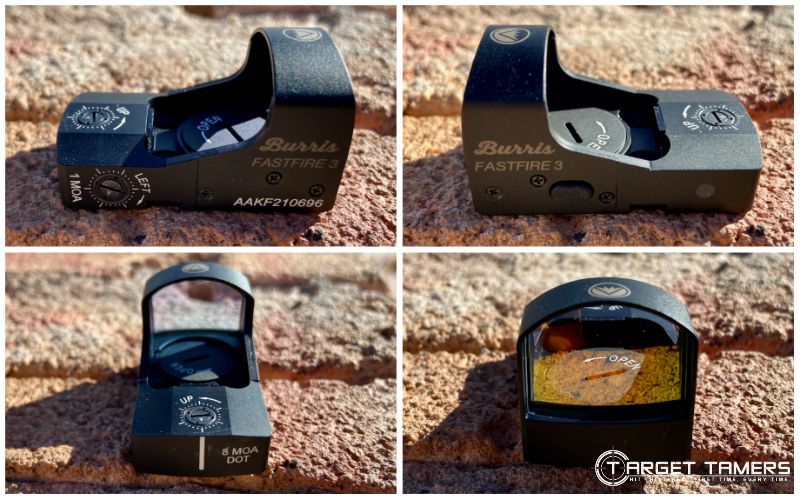
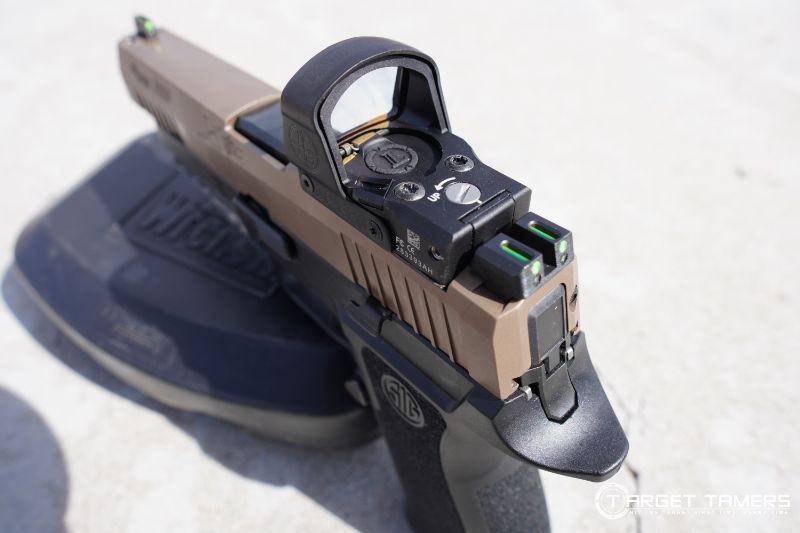
Both the Leupold DeltaPoint Pro and Burris Fastfire 3 have 1 MOA adjustments. This is the standard for pistol red dot sights. Though both red dots tracked true, I liked the audible, tactile clicks with the Leupold that I didn’t get from the Burris.
The pistol sights have turrets that are recessed into the body and are exposed. I have not had an issue with either regarding unintentional adjustments.
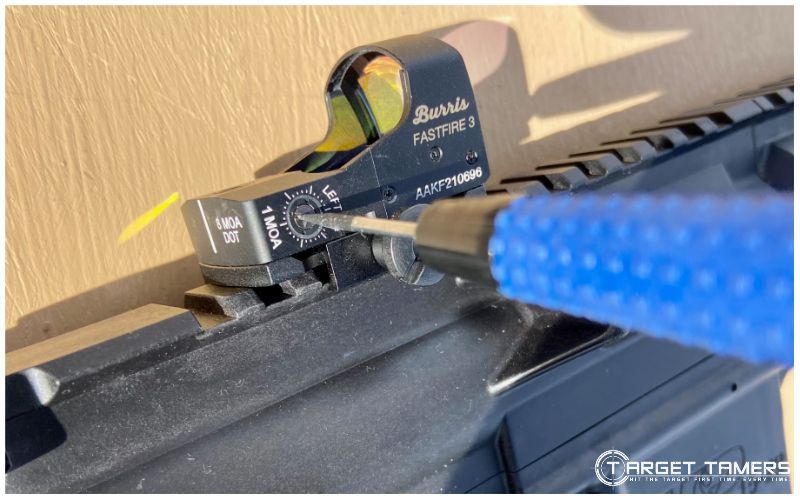
The Burris FastFire 3 has scale markings, and you’ll need them. Adjustments are not audible or tactile. I needed to focus on the scale rotations in order to sight in the red dot. Because it turns out that it’s accurate, I’m forgiving of this.
The Leupold has much better turret quality if you’re accustomed to having positive clicks. They’re a little easy to adjust, so easy does it here.
Winner: Leupold DeltaPoint Pro
Illumination Settings
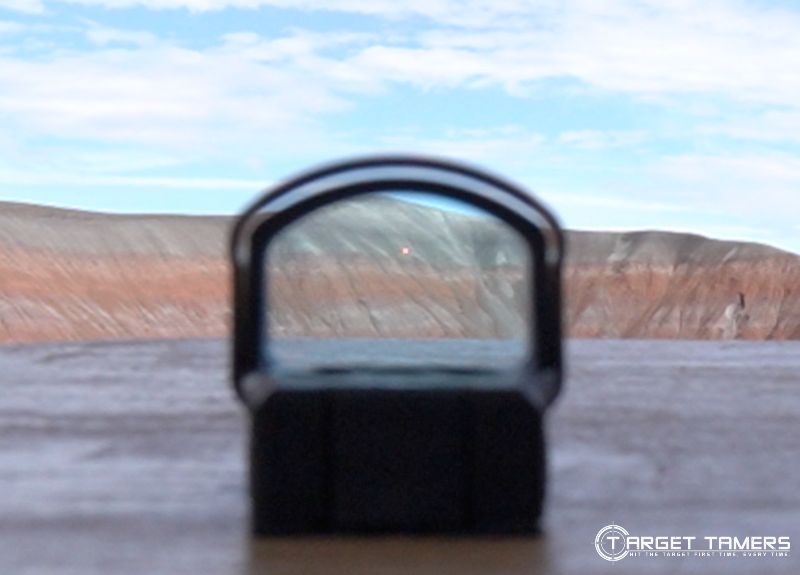
The illumination of a red dot sight is essential to consider as it’s the primary aiming system that you rely on. Without illumination, the red dot sight is rendered useless. The Leupold DeltaPoint Pro has 8 illumination settings versus the 3 manual settings in the Burris Fastfire 3.
Max brightness in the Leupold is great and I would like to see it brighter but sitting at setting 6 for most conditions is a non-issue. Since it’s button control, it is tedious to move through all the settings until you get to the illumination you want. The dim settings are excellent for low light.
Manual illumination is limited to three settings in the Burris Fastfire 3. I actually preferred manual illumination in dark conditions as I felt like the sensor illumination was just a tad bright – think building searches or middle of the night vision compound raids and dealing with intruders.
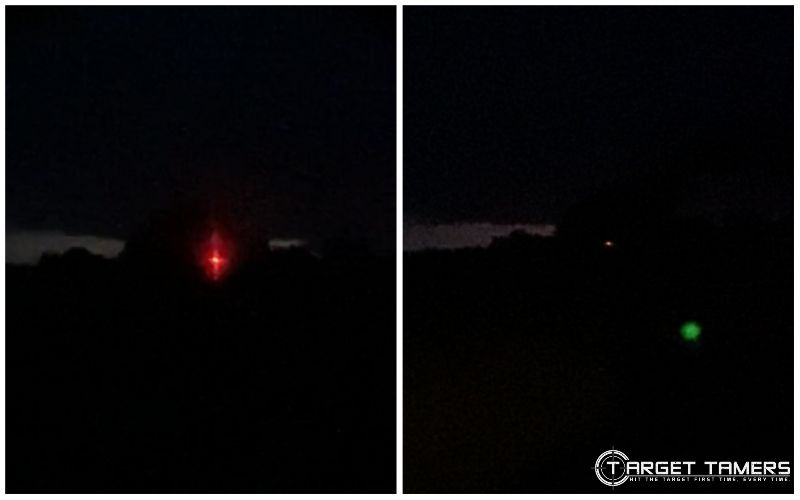
The Auto Brightness is actually very good for daylight conditions. The sensor is continuously sampling light (and I can imagine is also draining battery life) and takes about a second to visually change (to my eyes). Since it proved to be an effective feature, I approve of the Auto Brightness and prefer to use it during the day.
When it comes to comparing both illumination systems, I do prefer the dynamic brightness of the Burris Fastfire 3. When I want to switch to manual, the limited three settings actually work in my favor for fast changes between the settings.
Though I like the eight illumination offerings of the Leupold, I do have to go through the entire range before finding the setting I want. Given the position of the illumination button, I can’t see visual changes as I’m making them.
Winner: Burris Fastfire 3
Illumination Control Location
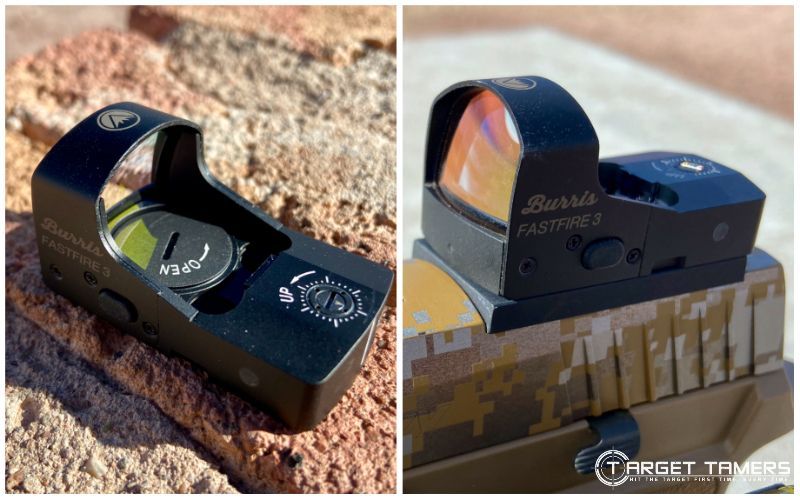
Pistol red dots have button control to set and change the illumination. However, where this button is located makes a big difference in convenience. The Leupold DeltaPoint Pro has the button located on the top surface in the center. The Burris FastFire 3 has a tiny button located on the left side.
It should be obvious which is the better location. It’s the side button on the Burris red dot sight. Though it’s small and located on the side, I’ve not unintentionally changed the settings. Because it’s on the side, I can visually see the changes to the illumination as I press the button.
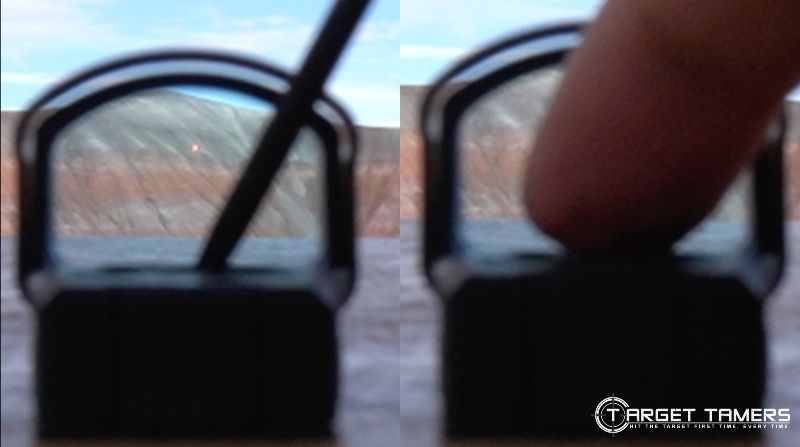
The Leupold Deltapoint Pro has the right idea of keeping the button in an out-of-the-way location, but when making changes to the illumination, guess what is in the way? Your giant finger. I can promise your finger will look ten times larger when it’s blocking the entire sight picture as you change illumination settings. This is annoying as I can’t visually watch the illumination change as it’s happening.
It might not be a big deal to you, but for me, I prefer to see it change as I change it. The Burris wins out this one.
Winner: Burris Fastfire 3
Battery Life
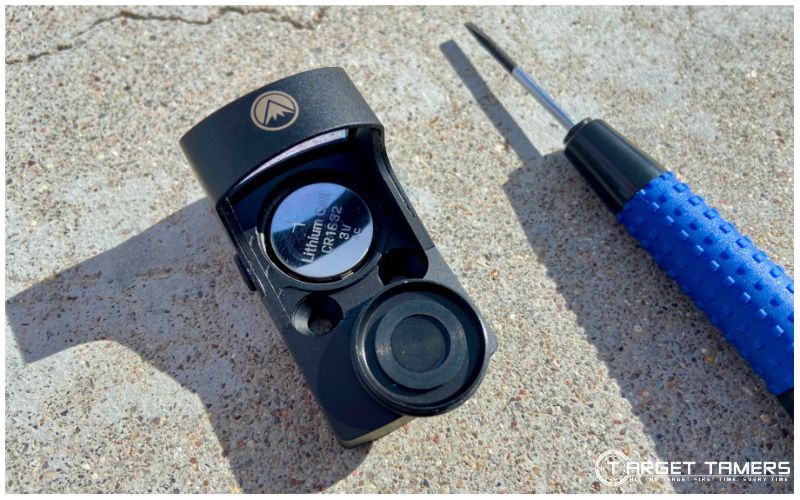
On average, pistol red dots just don't compete with the long-lasting battery runtimes of enclosed rifle red dots unless it’s a Holosun – they have industry-leading 50,000 hours. Back to topic, the Leupold Deltapoint Pro has a runtime of 300-1600 hours while the Burris has a runtime of 5000 hours.
I’ve not yet had to change the battery life on either red dot sight, and it’s been over 6 months. However, I do suspect that I’ll need to change both of them out any day now.
To help with battery conservation, both red dots have a special feature. The Leupold DeltaPoint Pro has Motion Sensor Technology (MST). It automatically deactivates the illumination after five minutes of non-motion. The illumination reactivates when it detects movement. It works. In fact, I keep forgetting the Leupold has this feature because it’s always ready to go when I pick it up.
The Burris doesn’t have a motion sensor to put the illumination in standby, but what it does have is Auto Off. After eight hours from the last button press, the FastFire 3 will automatically power down. You can always manually power it down with the button, but in case you forget, Auto Off has you covered.
The downside is that you’ll need to manually activate the Fastfire 3 when it comes time to use it.
Even though the Leupold technically has the shorter battery life, the MST feature has kept it going far beyond its rated battery runtime, and it works.
Winner: Leupold DeltaPoint Pro
Battery Type
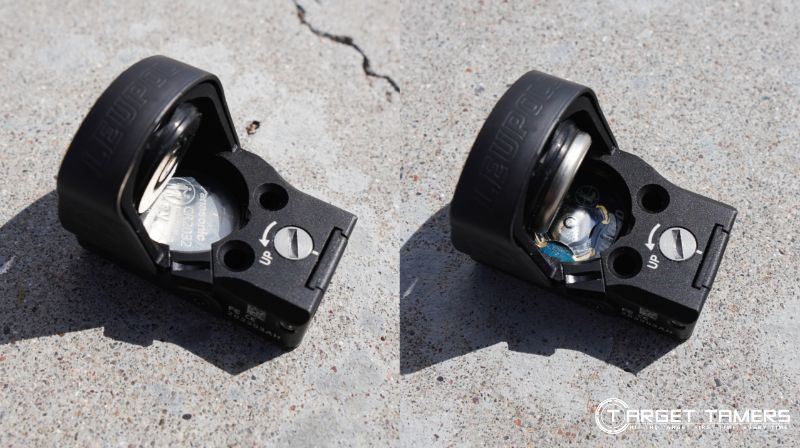
Interestingly, even though both the Leupold DeltaPoint Pro and the Burris FastFire 3 are pistol red dot sights, they take different batteries to operate. The Leupold DPP takes a CR2032 while the Burris FF3 takes a CR1632.
I tend to have more CR2032 batteries on hand, so it’s a personal benefit to me that I don’t need to buy another set of bulk batteries just to satisfy the power needs of the Leupold DeltaPoint Pro. I can just grab one from my box of spares.
The Deltapoint Pro is a little larger than the Fastfire 3, and when you see the Fastfire 3 in person, you can see why a CR1632 is a better fit. Due to the different mAh (milliampere hour) specs of the two types of batteries, it’s obvious that the Leupold consumes a lot of power to run the illumination.
Even so, my personal preference wins out because I’ve used and own both. Ha!
Winner: Leupold DeltaPoint Pro
Size/Weight
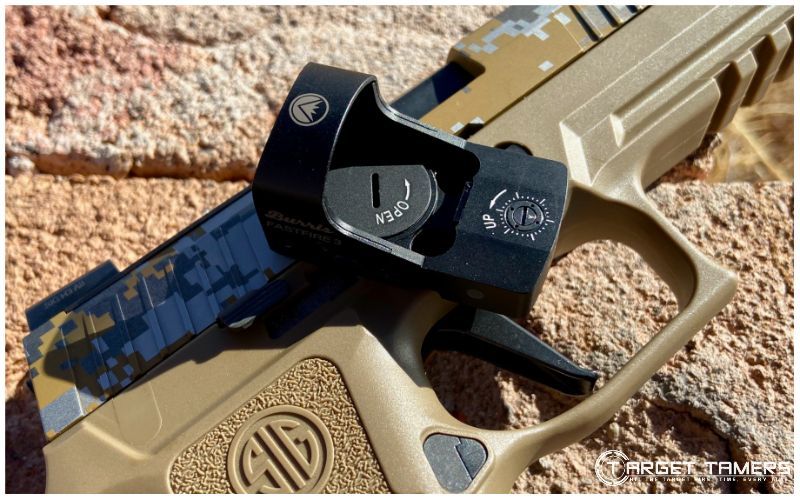
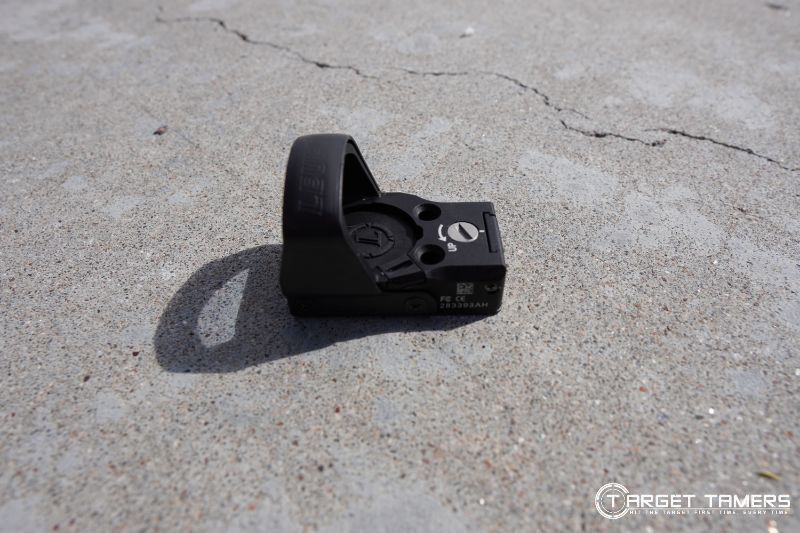
Overall, pistol red dot sights are small, lightweight, and compact. They’re micro-sized and usually have a HUD (Heads-Up Display) design. Since they’re designed for pistols, the lengths are kept short under 2” to fit the milled slides of optic-ready handguns.
The size differences are really a non-issue between the Burris FastFire 3 and the Leupold DeltaPoint Pro. They almost weigh the same and they’re similar in size with the Burris as the smaller unit.

Though the Burris is cute sized, the Leupold has an external frame that widens the overall physical attributes of the red dot. Though the frame itself hangs slightly over the edge of the slide, the actual red dot base has a flush fit with the slide. It doesn’t inhibit holster use even if you might nitpick over how it looks aesthetically.
Speaking of looks, I like the look of the Burris red dot sight. But add in the see-through sunshade that’s included and it’s longer – sort of ugly. Don’t get me wrong, it serves a couple of purposes, so I’m not going to drag its appearance through the mud.
Winner: Tie
Build Quality
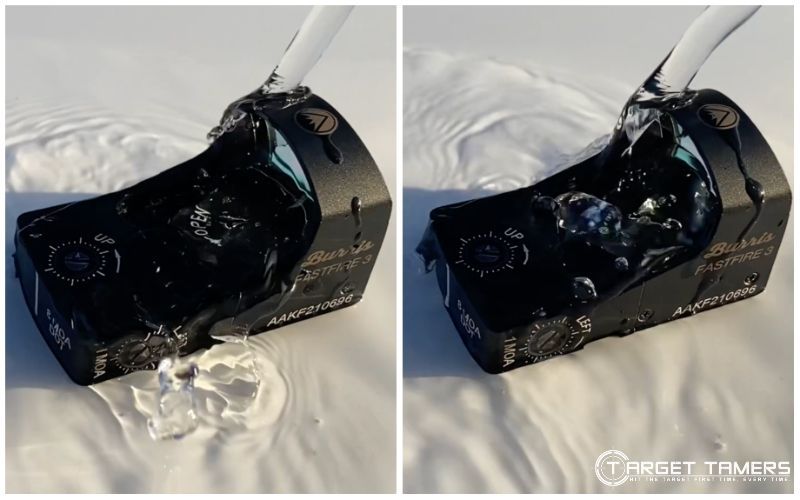
Both the Burris Fastfire 3 and the Leupold DeltaPoint Pro are well made optics. I’ve put the Fastfire 3 through the ringer using it to rack the slide repeatedly on a wood bench. With a look at it today, you’d never know I did that.
The Leupold is rated to be submersion-proof to 33 feet. I do wonder about the coil spring that is exposed. It’s in between the front lens and the battery compartment. I could see that rusting over time.
The Burris is completely enclosed. I did have trouble with properly securing down the battery compartment once. It completely popped off when I let off a round. That was embarrassing, but I learned a good lesson about it – make sure the lid is entirely in its threading and tightened down.
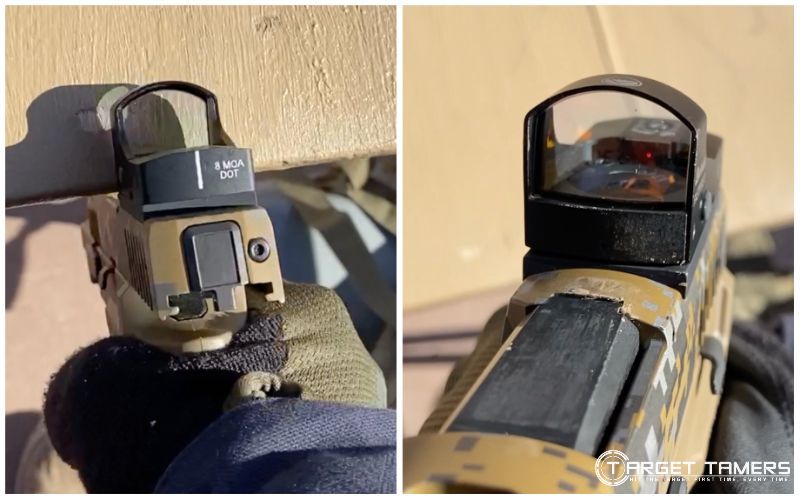
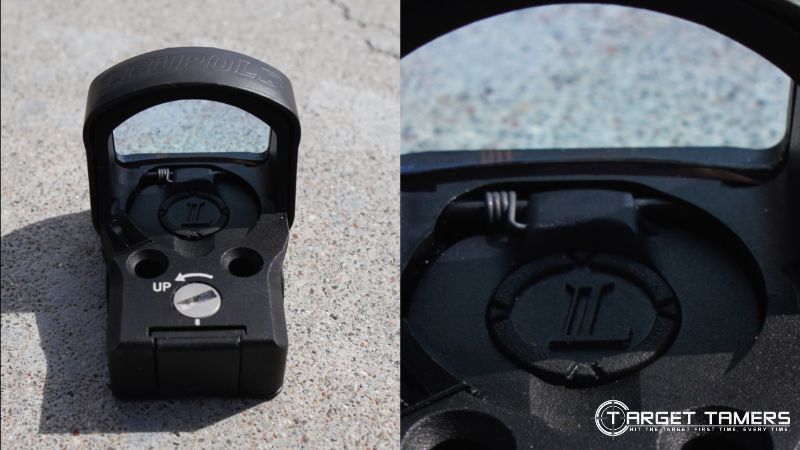
Because I’m now paranoid about this, I tend to have an extra heavy hand when dealing with the battery lid. I can see the slot getting worn out quickly. Fortunately, I shouldn’t have to change the battery out but for a couple times a year.
Though the Burris is not waterproof rated at the same stress levels as the Leupold Deltapoint Pro, it has proven to be rugged and up to handling the abuse of daily and hard work.
The Leupold has had a long track record of being a reliable and dependable sight with a tough exterior frame. But… that little coil? Since I’ve taken a harder hand with the Burris, for the money, it’s demonstrated its worth.
Winner: Burris Fastfire 3
Mounting
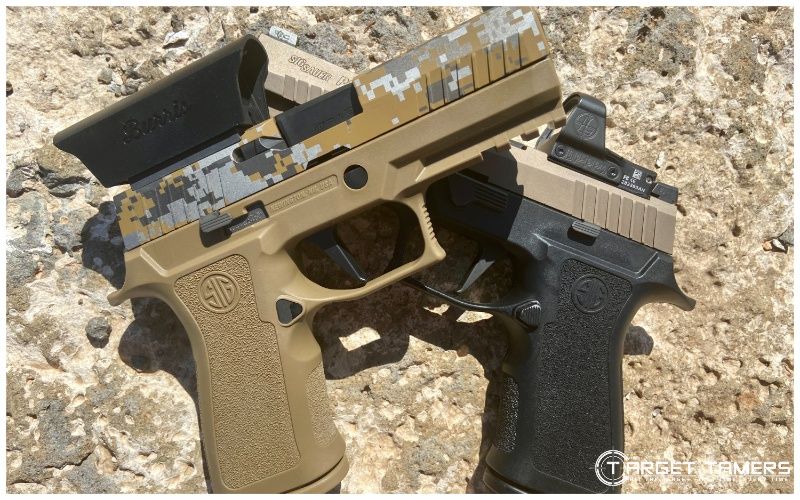
The ease of mounting a pistol sight depends on multiple things – pistol, footprint, screws, or if you need an adapter plate. The Leupold DeltaPoint Pro was a breeze to mount because it went directly on a milled slide made for the Shield RMS/SMS footprint. The FastFire 3 was a little difficult.
The Leupold went on a Sig Sauer P320X V-TAC. It mounted perfectly – no plates needed.
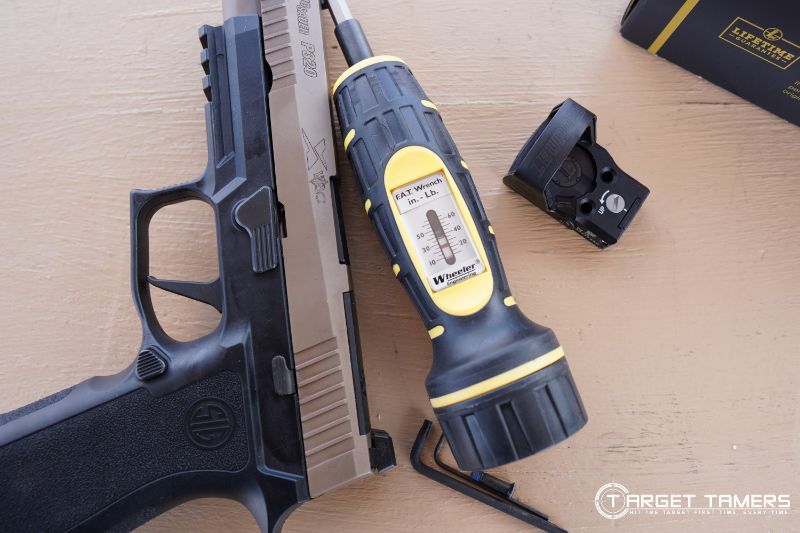
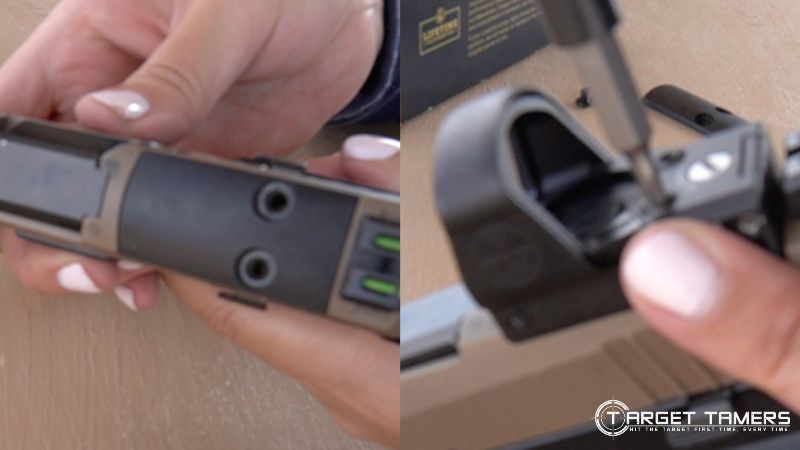
The Burris Fastfire 3 has a Docter/Noblex mounting standard that would be the same as a Vortex Viper and Vortex Venom. If you already have a pistol or adapter plate with this cut, then it will be a non-issue to mount.
Unfortunately, the pistol I used to mount it has a unique mounting footprint (older Sig slide that only fit the Sig Sauer Romeo 1 red dot sight). I took my chances and ordered the Burris P226 plate – it does not fit. After working with Evolution Gun Works, we went for the Vortex Venom plate and opted for the longer Vortex Venom 6-48 mounting screws. With this setup, I was able to get the Fastfire 3 mounted to a Sig Sauer P320 X-Carry where it will stay!
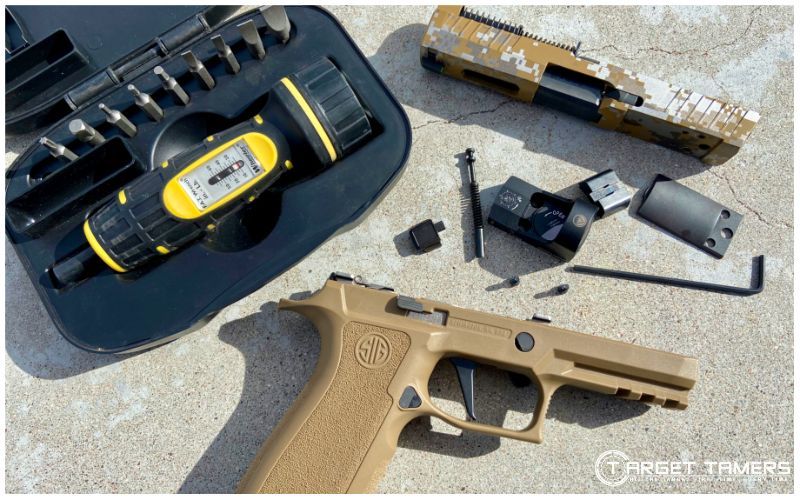
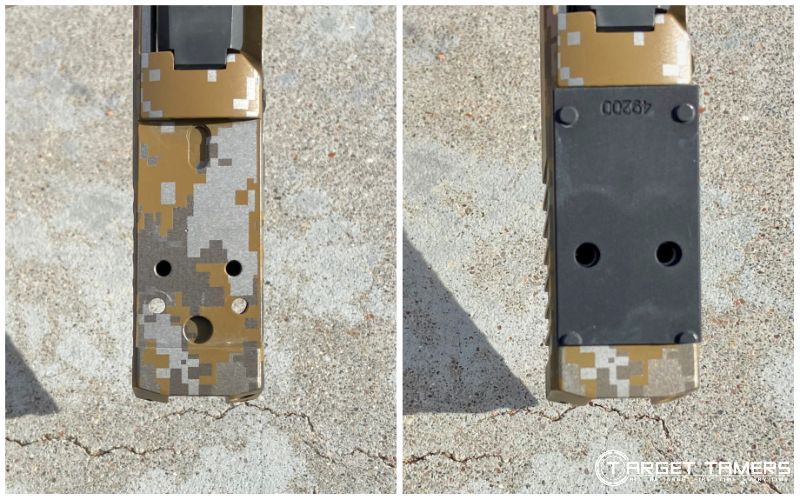
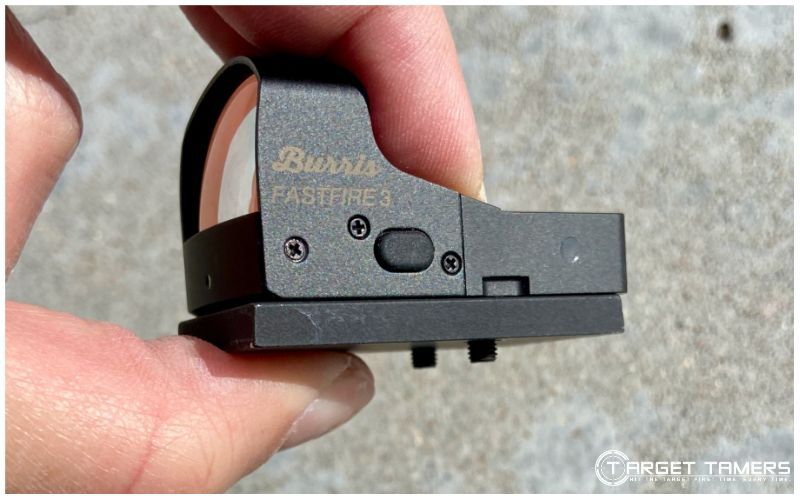
It's not the fault of the FastFire 3 red dot sight that I felt like I went through so much trouble to mount it. However, it’s a fantastic example of making sure you match the right red dot to your handgun or at least have the correct adapter plates and screws to get the job done.
Since this is an experience that will depend on the equipment you have, it’s a tie.
Winner: Tie
Rifle Mounting Compatibility
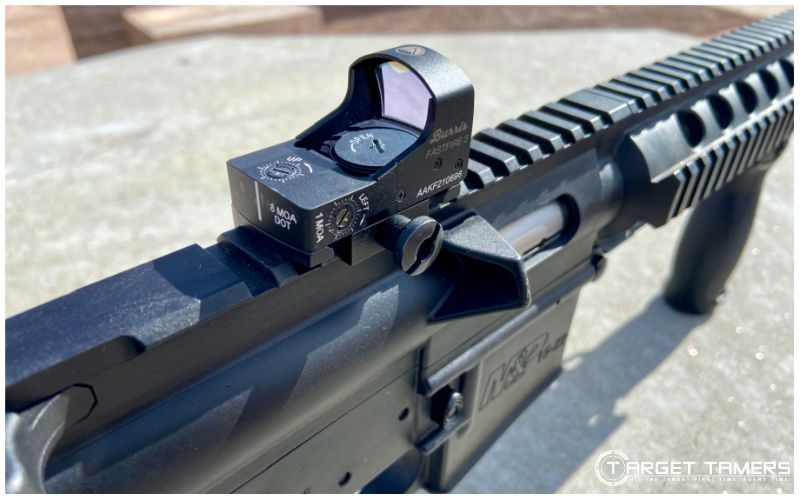
Out of the box, the Burris FastFire 3 is ready to be mounted to any firearm with a rail. A rail mount is included and is simple, easy, and fast to use. I mounted the Fastfire 3 to an AR-15, and though I consider it small for my tastes on a rifle, it absolutely did the job.
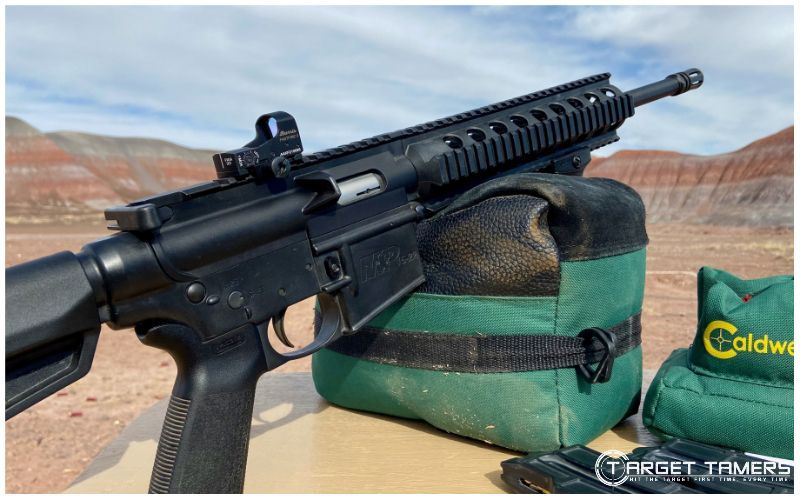

The Leupold DeltaPoint Pro can also be mounted to any firearm with a rail, but the rail mount is not included. It must be purchased separately.
Since Burris has a rail mount in the box as an included accessory, it certainly adds value.
Winner: Burris Fastfire 3
Special Features
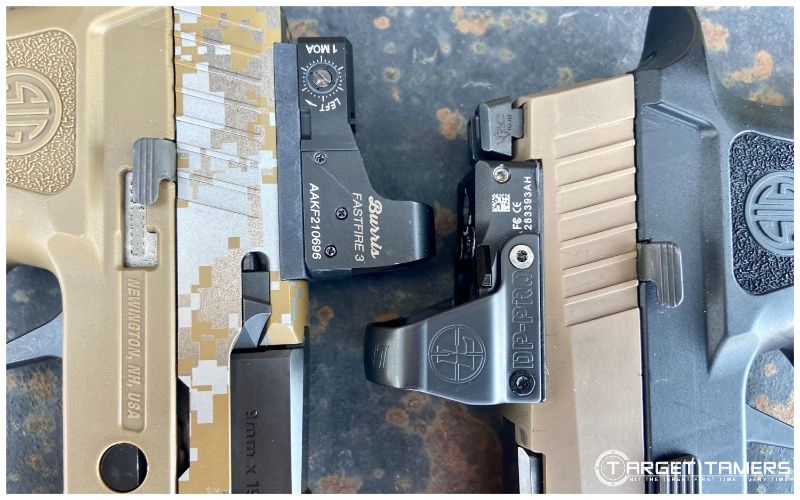
I define special features as anything that makes an optic stand out from the rest. In this case, the Leupold DeltaPoint Pro has the Motion Sensor Technology (MST) feature. The Burris Fastfire 3 has Auto Off, Auto Brightness, and as a bonus, a rail mount and sunshade are included in the box.
The MST in the Leupold is fantastic for those who want to eliminate the extra step of manually turning on and off the optic. It works, and it does help to conserve battery life. I suppose you could also consider its extreme waterproof rating as a special feature, but I consider it as an expectation at this point for its high cost.
The Burris FastFire 3 has Auto Brightness for a dynamic illumination system that is based off ambient conditions. I like it, but I also appreciate the manual illumination for when I deem it appropriate for the conditions.
The Auto Off has an eight-hour timer, and I suppose you wouldn’t want it to turn off right when you need it. But it’s a helpful feature for forgetful folks and to preserve battery life.
The included rail mount and sunshade are nice extras but may be rendered useless if the FF3 is reserved for pistols or if the holster doesn’t cater for the extra length of the sunshade.
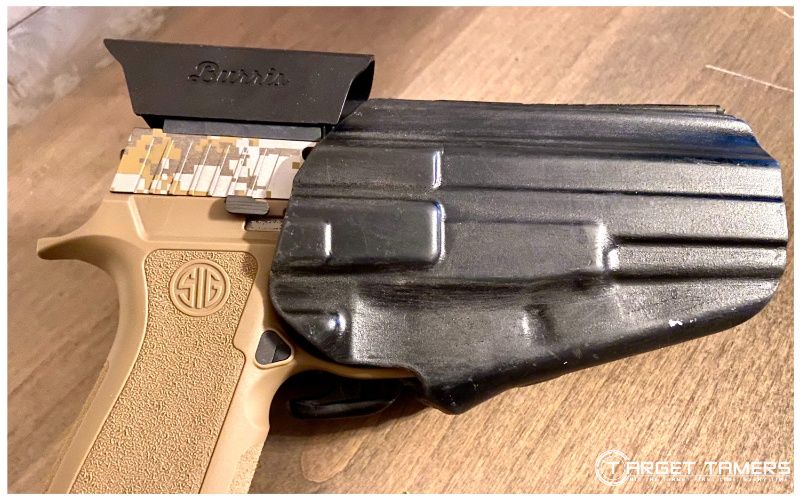
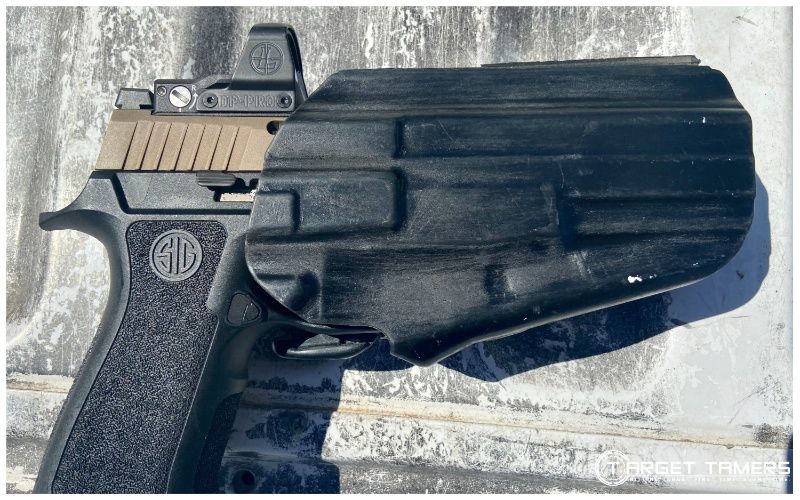
As a side note, the sunshade barely pushes up against the holster, but it fits, and the retention system engages. This is with a SafariLand GLS 578 Pro Fit Long 49/18 holster. I don’t use this Sig with this holster, but it did fit with the sunshade attached – I thought you should know anyway.
The Leupold DeltaPoint Pro has unquestionable quality and sound performance, but it’s priced right for all that it offers. It’s expensive, but you’re paying for that foundational quality.
The Burris Fastfire 3 may not be the Leupold’s equal in overall performance, but it comes with everything to make it a versatile and high-performing sight. When it comes to value, the Burris has it.
Winner: Burris Fastfire 3
Who is the Burris Fastfire 3 Best Suited To?
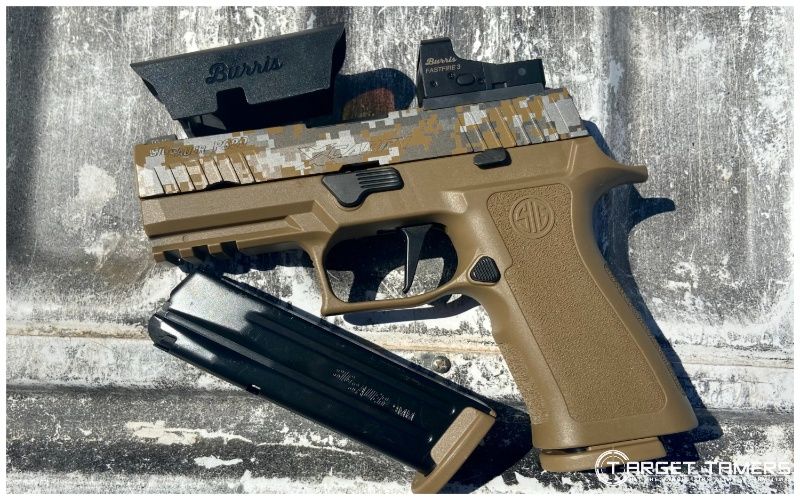
The Burris Fastfire 3 is an affordable, value-packed red dot sight that is recommended for target acquisition shooting, hunting, home defense, and short-range engagements given its large 8 MOA dot. It’s a sturdy and reliable optic that offers compactness and a no-nonsense platform for getting right to work.
I have tested it and approve of its build quality – it’s a micro-sized tank. It will hold up to the abuse of daily wear on a carry gun. Though it does require a manual ‘on’ approach, most people will confirm dot activation just before using their firearm anyway.
From the illumination system to the rail mount, the Burris is an affordable alternative that will serve most purposes for those looking for a red dot sight for concealed carry, target shooting, and for hunting.
Who is the Leupold DeltaPoint Pro Best Suited To?
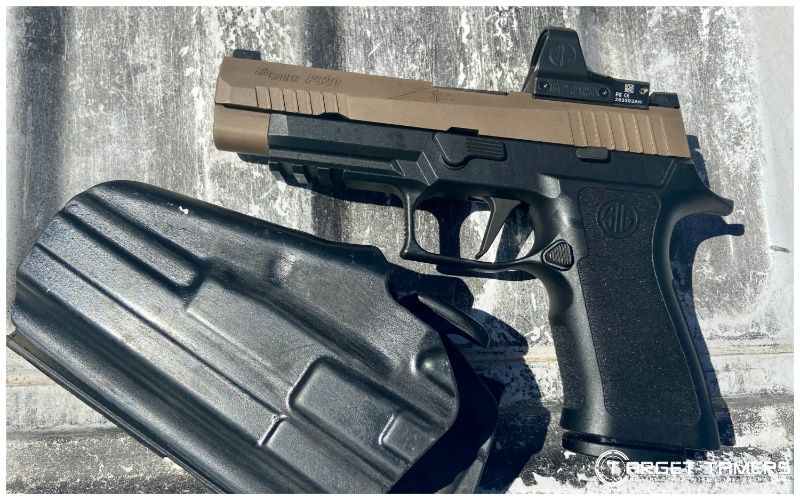
The Leupold DeltaPoint Pro is a high-end red dot sight. As an alternative to other high-performance micro red dot sights (Aimpoint, Trijicon, etc.), the Leupold is a popular and highly rated optic. It’s recommended for everything from home defense and target shooting to competition and duty work.
Though its battery life may be something to cry about, I’ve found that it lasts longer than its rated specifications. I credit this entirely to the MST feature. Other than needing to change the illumination appropriate for the conditions I’m shooting in, I don’t ever fuss with turning it on or off.
The one thing I will be keeping my eye on during ownership is the deterioration of the exposed coil spring that operates the battery compartment lid. I’m a bit skeptical that I won’t ever have issues with it, but we’ll see.
Those who want a proven optic with a long reputation for almost any application should consider the Leupold Deltapoint Pro. This is with the caveat of knowing that your finger will be in the way when you change the illumination!
FAQ's
In general, it depends on the model of the red dot sight according to the dot size. Burris offers 3 MOA and 8 MOA models. Leupold offers 2.5 MOA and 6 MOA models. The 2.5 MOA would be better for long range precision work and is popular with rifles.
At this point in time, neither Burris nor Leupold offer the Fastfire 3 or the DeltaPoint Pro with green illumination. Red illumination is the only LED color available but is suitable for most purposes and most people’s vision.
CVLife RDS green illumination - Image by Tina Fa'apoi (Own Work) for Target Tamers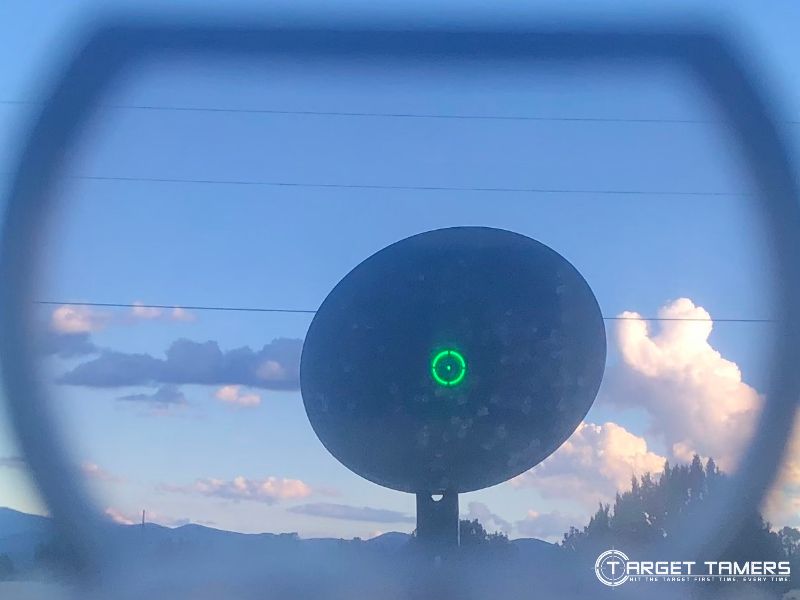
Burris says that the Fastfire 3 will fit on a Glock MOS. They have mounting instructions specifically for this setup. The Leupold DeltaPoint Pro will fit on a Glock and Leupold also has DP-Pro mounting systems available.
Leupold has a lifetime guarantee that covers the DeltaPoint Pro. It’s unconditional, so you don’t need proof of ownership, purchase, or warranty registration. Burris has a Forever No Questions Asked warranty that’s automatically transferred to new owners and is effective for the product’s lifetime.
Burris Warranty on box - Image by Tina Fa'apoi (Own Work) for Target Tamers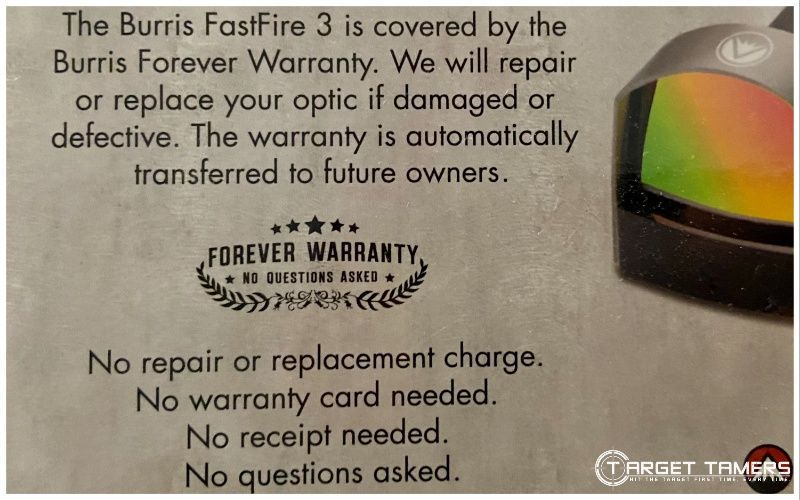
Leupold DeltaPoint Pro VS Burris Fastfire 3: Which is Best?
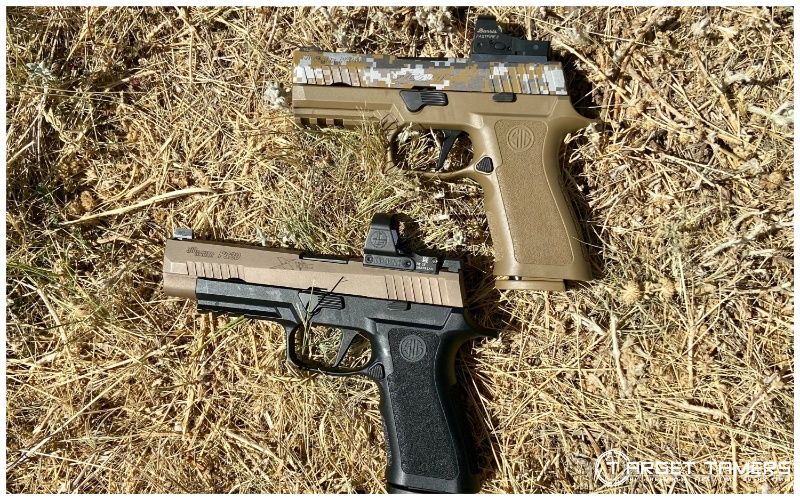
Overall, the primary difference between the Leupold Deltapoint Pro and the Burris FastFire 3 is cost. The Fastfire 3 is cheaper and comes with accessories that adds value and increases versatility. The Leupold has foundational quality that lends to its use in competition and law enforcement.
If you want the best and are willing to pay for it, the Leupold DeltaPoint Pro will satisfy your requirements.
The Burris FastFire 3 is affordable and dependable. The small window does take some getting used to, but with practice and strong pistol fundamentals, it makes a good, low footprint optic for a carry firearm.
Further Reading



